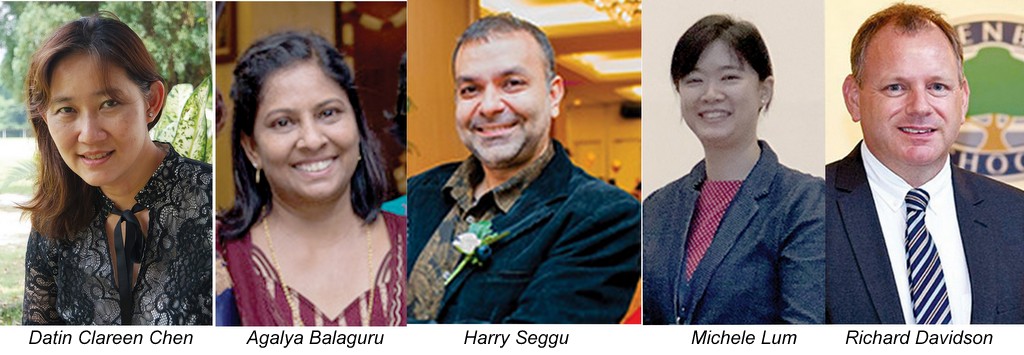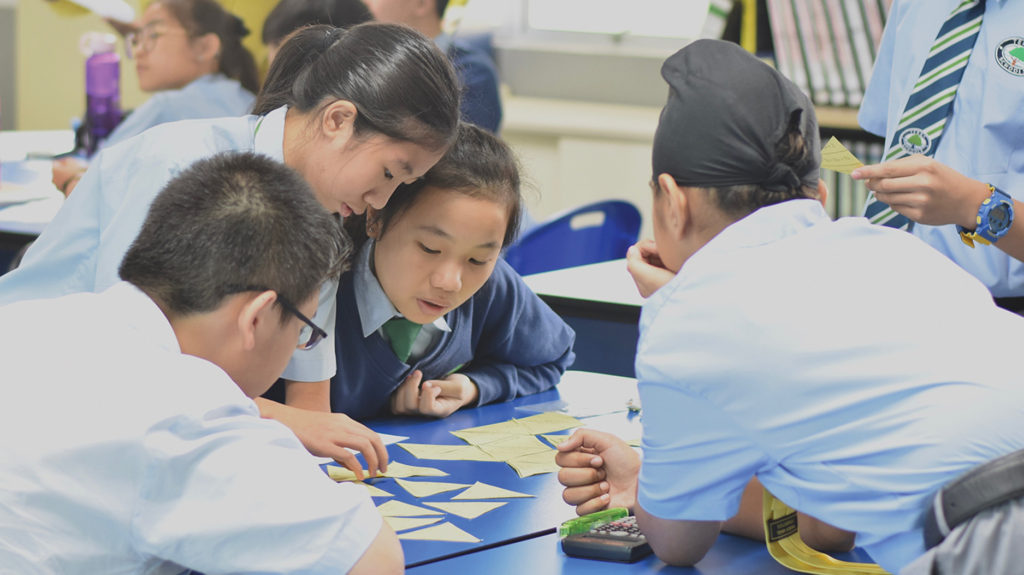

By Jo Lynn Chong
We have heard about it and we have seen it. Within these recent years, the number of international schools has increased tremendously in our beloved city, Ipoh.
Many parents are now asking the question: is sending our children to international schools so that they can have better English proficiency and better quality education really worth it? If one considers the whopping price difference and the possibility that the children might lose touch with our three languages, as international schools use English as their medium of instruction, is this the way to go?
An article “International Schools: Why their numbers are growing” published by the New Straits Times on April 23, 2017, listed the removal of the 40 per cent quota on local students in international schools in 2012 as one of the contributing factors of the increase in students’ enrolment.




Another article “Experts concerned as Malaysians outnumber foreigners in international schools” published by the Malay Mail on November 18, 2019, stated that, “According to the Education Ministry, in the last 10 years, the number of Malaysian students enrolling into international schools increased by 450 per cent.”
With all this in mind, Ipoh Echo decided to glean some perspectives from the heads of some international schools, parents and fortunate students who got the best of both worlds.


The main difference between international and national schools is the methods of teaching.
International Syllabus?


Michele Lum, Head of Fairview International School Ipoh stated, “We adopt the Fairview International School’s curriculum, incorporating standards and learning outcomes from the UK national curriculum. Besides the curriculum, Fairview Ipoh is also the only IB World School in Perak to offer the teaching pedagogies for the International Baccalaureate programme.”
Agalya Balaguru, Principal of ASIA Metropolitan International School (AMETIS) explained, “We adopt the syllabus of the Cambridge International Education. It’s globally recognised, widely accepted, a popular trusted education brand, credible, progressive, easy to implement and cost-effective.”
“We offer the British syllabus where students are able to sit for either the Cambridge IGCSE or Edexcel International examinations,” Harry Seggu, Director of EdQuest International School stated.
“Tenby Schools is a part of the International Schools Partnership and we consist of several schools on one campus in Ipoh that follow slightly different curricula: National and International. Our International Primary programme follows the British National Curriculum with the International Primary Curriculum (IPC) woven throughout. Students’ progress in mathematics, literacy and science are tracked through the annual progress tests from GL Education and the periodic International Schools Assessment (ISA). International Secondary School students follow the British National Curriculum modified to the local context and interwoven with thematic, inquiry-based projects. Students in Years 10 and 11 follow the IGCSE examinations syllabi and our Sixth Form students (years 12 and 13) follow the A-Level examination syllabi from the University of Cambridge (UK). Besides that, we introduced the fast track Mandarin programme for students from Nursery (aged 3+) to Year 3 (8 years old) for parents who wish that their children have a strong foundation in Mandarin,” Richard Davidson, Campus Principal of Tenby Schools Ipoh stated.
Datin Clareen Chen, Chief Executive Officer of Wesley Methodist School Ipoh (International) stated, “Our school adopts the Cambridge Syllabus supplemented with KSSM Bahasa Malaysia and HSK Mandarin. The syllabus from international sources encourages students to do their research over a broader scope and tends not to be limited to the local context. Students then get to draw a bigger picture of what is happening around them.”


Differences in Teaching Styles
Apart from the syllabus, with English language being the medium of instruction, the main difference between international and national schools, for many, is the methods of teaching.
Promote Independence and Creativity in Learning
According to the students and the heads of international schools, international schools promote independence and creativity in learning, unlike their national counterparts. Instead of directly giving the information to the students, they teach students to do research, process concepts and ask their own questions, essentially training them to become responsible for their own learning. Original ideas, group discussions and being interactive in class are also strongly encouraged. Students are often given group projects to work on and the curriculum, overall, is more practical-based rather than theory-based.


“The facilities, visions and priorities are basically the same but the approach is where the difference is. National schools have over the years compromised their academic delivery, diverting towards too much paperwork, outdated academic content, constant changes to policies and a teaching force clearly out of touch with the classroom dynamics and current trends. The international schools operate from a more stable platform and are able to adapt and adopt to changing needs,” Agalya explained.
“International schools give us lots of opportunities to showcase our skills, whereas, in a national school, the only thing that really matters to them is the results,” a 17-year-old from SJK(C) Ave Maria Convent and later Tenby International Schools Ipoh sighed.
“Good attitude is cultivated through the International Baccalaureate’s Learner Profile attributes and life skills are nurtured through the Approaches to Learning (ATL) skills,” Lum enthused.


Digital Technology Encouraged
“We offer a holistic development programme, breeding positivity and embracing the culture of a growth mindset,” Seggu expressed. “We are a pioneer in Perak by being a full digital tech school. Students use laptops and do not need to carry heavy textbooks. They also learn to make notes and mind maps from Year 1 itself. We help prepare students at an early age so that when they graduate, they are ready for college life.”


Low Teacher to Student Ratios
Other major aspects that set the two types of schools apart are the teacher to student ratios, facilities and the freedom of choosing subjects.
“One of the usual differences between international schools and national schools is the teaching faculty – qualified teachers, specialists in their subject and with a teaching qualification, blend of national and international teachers and low teacher to student ratios,” Davidson stated.
“Our teacher-student ratio is very small, 1:15, and we offer individual attention, where students who attend our school will not need to take on any extra tutorial or tuition classes elsewhere,” Seggu explained.
“Our teacher to student ratio is also capped at 1:20 for quality delivery of academic content. In national schools, the good students do well in spite of the teachers as parents send their children to tuition etc. The weaker ones are often left behind,” Agalya told Ipoh Echo.
Wider Range of Subjects and Facilities
The wider range of subjects and facilities provided in international schools enables students to pursue their talents in various fields, be it in sports, drama, art, design, music, and so much more. “The Arts subjects in the international schools, such as Art, Music and Drama, are given as much priority as other subjects, whereas in national schools, these subjects are given little to no attention,” said Jorja, 16, who experienced both syllabuses. Facilities, such as swimming pool, air-conditioned rooms, music rooms, and drama rooms (etc.) were also perks that the students mentioned.
A 52-year-old mother stated, “The main advantage I like about international schools is that the students are not categorised in streams. It gives students the freedom to study what they prefer.”
“Students have the choice of studying both Science, Arts and Humanities subjects. We do not operate pathways as top universities around the world require students to have a balanced curriculum,” Davidson explained.




Student Experiences
For some students, these different teaching and learning methods used in international schools proved extremely effective for them. An 18-year-old who was formerly from a well-known Chinese secondary school in Kuala Kangsar, said, “My parents found out that I was not doing well in school so, after months of planning, they decided to send me to an international school called EdQuest in Ipoh to improve my studies. I think I am happiest where I am currently studying because I’m having so much fun in school, as I get to learn something new every day, which is the best way of learning and it’s really helpful in my studies.”
“I find that many students cannot handle the enormous amounts of homework in national primary school, and some cannot perform well in national secondary school due to having too many subjects to focus on and being poor in Malay language, such as my son,” stated the mother of the 18-year-old.


For others, however, the international school did not work as well as planned. A 16-year-old Ipohite, who went back to a national school after being in an international school for approximately three months, said, “My parents thought that by putting me in an international school, I could land many opportunities in the future that national schools would not be able to provide. However, I liked the environment in the national side a bit more mainly because of how the assignments don’t feel so overwhelming. The assignments, which are usually projects, take about a week or so to complete, taking up a lot of time and energy, in my case, to put out something presentable.”


Corporal Punishment
Pertaining to the matters of teaching, another major issue that frequently surfaced during conversations with the students was school corporal punishment in national schools. This refers to inflicting deliberate physical and emotional pain or discomfort in response to undesired behaviour by students in schools, often involving striking students across various parts of the body with a tool such as a rattan cane.
Many students expressed that the usage of it, although helped in disciplining them and moulding them into presentable and well-mannered people, the trauma created consequences both short and long term.
“I’d pretend to be sick to stay at home for fear of being caned and insulted by my teacher, plus most of my friendships at the time were built on me allowing my seatmate to copy off my English tests which meant they didn’t last in the long term,” a 17-year-old vented, confessing that the caning insidiously affected her, mentally and physically.
“In an international school, I was more focused on building genuine friendships and participating in class rather than stressing about homework and frequent exams.”
Another 16-year-old, schooled in Sekolah Kebangsaan Seri Kelebang and later in Tenby International Schools Ipoh, revealed that what struck him the most when he stepped foot into his new international school was the absence of beating. Besides that, however, he also said, “At the beginning, I wasn’t so happy with it because it’s so hard for me to cope with things around me like having difficulties speaking English, but yeah, I managed to find a friend in the school. Learning was also hard for me at the beginning but I was also happy to escape from my old school.”
“I sent my children to a national primary school as it is crucial that they learn Bahasa Malaysia and during that time, Mathematics and Science were taught in English. Unfortunately, when my children were in their national secondary school, the government changed the medium of instruction for Mathematics and Science from English to Bahasa Malaysia. Therefore, we switched our children to an international school. It is a smaller, good and caring school but there is not enough co-curriculum offered,” a 48-year-old mother told Ipoh Echo.


Socially Beneficial
Some students appreciated the fact that being in an international school allowed them to mingle with students and teachers from different countries, exposing them to different cultures thus making them tolerant and respectful people.
Some students, on the contrary, argued that the national schools give students opportunities to be with Malaysian students of different races – Malay, Chinese and Indian, therefore enabling them to learn about their Malaysian roots.
“Kids in international schools are generally more well-rounded. They have much more exposure, are more open-minded and dared to speak up,” a 16-year-old who went to SJK (C) Ave Maria Convent, Tenby International Schools Ipoh and Wesley Methodist School Ipoh (International) observed.
Another 16-year-old student said, “I enjoyed learning the international syllabus a lot more, but I find students in the national school to be more down-to-earth and easy to relate to and make friends with.”
A 17-year-old Ipohite who had been in multiple international and national schools said, “I’m always happy wherever I go. I make friends and try to get the best out of everything,” when asked if she preferred one over the other. “My parents have never thought of sending me to an international school before. I’ve switched from national school to an international school when my family and I moved to Beijing.”


Future Perspectives
When asked about the response of parents towards international schools in Ipoh, Davidson said, “We’ve nearly 1200 students on campus and we are growing. We find that the people of Ipoh are well aware in these difficult times. In order for their children to be successful in life, they need to make an investment in their education. There is an increasing number of international schools opening up in Ipoh and they all claim to offer the same type of education and for a variety of different budgets. The market in Ipoh is limited and it will not be possible for all of them to be sustained by the population or economy of Ipoh. Those that survive will do so because they provide sustainable opportunities for learning for their students, of a high international standard.”
Quality vs Price


“I feel Ipohites are following market trends and peer influences now. Many parents are still selecting schools based on fees and facilities. This is quite alarming, as we’re talking about education for children here. Also, the Ipoh community is not well informed or fairly convinced of how recognised the IB programme is, in the education arena. We need to look beyond Ipoh. The increment in the number of international schools, however, is definitely noticeable. There is a possibility of increment if there is no quota on this as many presume Ipoh is a good market. However, we must be careful with the numbers and be more focused on quality than quantity,” Lum expressed.
“There is a potential market for international school education in Ipoh. Assuming the 5-10% upper income are already in the system, that leaves a huge 50% middle-class market largely untapped especially the upper-middle-class segment. With the right pricing and product package, this market can be converted. Parents are constantly on the look-out for alternatives available. As of 2019, there are 6 international schools in operation with another 2 coming in by 2020. The number is expected to bottom out in a rather crowded market. Already one of the schools that opened in 2019 saw a very poor response. The industry will eventually see consolidation and a shake-out. There is a possibility of a price war in a very competitive market. Mergers and acquisition could be a likely market scenario. Margins will be squeezed in a market that will see higher operation cost especially marketing-related cost. Revenue per student (RPS) is expected to fall by as much as 30%. There is a constant short supply of qualified human capital for international schools and the surge in growth will lead to drop in the quality issues as schools try to build volume to cover the operating cost,” Agalya elaborated.


Two is still better than one?
If possible, ironically, many parents would still support both international and national schools. National schools teach our three languages, Malay, Mandarin and Tamil, whereas international schools offer English as the medium of instruction, better teaching methods and a more widely-recognised syllabus. A popular choice amongst parents is to send children to a primary national school and then a secondary international school, thoroughly preparing them for future studies or work, locally or abroad.


